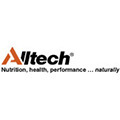 How can the pig industry stay profitable in the face of high feed costs, increased government regulations and consumer demands intensifying? This was the focus of Alltech’s 10th Pig Solutions Seminar, held in Hannover, Germany on the 12th of November.
How can the pig industry stay profitable in the face of high feed costs, increased government regulations and consumer demands intensifying? This was the focus of Alltech’s 10th Pig Solutions Seminar, held in Hannover, Germany on the 12th of November.
First up was Professor Denise Kelly, of Rowett Research Institute, with a fascinating presentation on the role of gut microbiota in gut health. The most startling revelation came from her current research: piglets from outdoor reared sows were colonised by good bacteria, mostly lactobacilli. In comparison to these were pigs reared in isolators, including those fed antibiotics. These were overwhelmingly colonised by different bacteria, including proteobacteria such as E-coli, which she referred to as pathobionts. These had a huge, visible effect on gene regulation in the gut.

“What was interesting is that most of the gene changes were associated with the immune response. This data indicated that the conditions animals were raised in was having a consistent and large effect on gene expression patterns,” she explained. “Animals raised indoors and in isolators with antibiotics, showed very significant up-regulation of genes, governing the inflammatory response, and animals in the outdoor group had significant down-regulation of these genes.” Inflammation is energy costly, therefore the outdoor pigs had a lower energy cost associated with their immune responses which can contribute towards improved productivity.
The second take away message was from Dr. Hans Stein of teh University of Illinois. His presentation focussed on increasing efficiency, specifically in relation to phosphorus. His method for calculating the standardised total tract digestibility of phosphorus involved subtracting the basal endogenous losses of P from apparent total tract digestibility. This is important for mixed diets as it allows a more accurate calculation of the amount of P available in the diet. It means that it is possible to only feed the required amount of P thus reducing excretion and benefitting the environment. A knock on effect of this is the accurate determination of how much phytase to add to diets, so that we are not over or under adding, increasing efficiency and control over costs.
The third speaker, Nigel Penligton of BPEX Division in the United Kingdom discussed his Lifecycle Analysis (LCA) tool that allows producers to measure the chosen environmental impacts of pig production and to model predicted change. He explained that sustainable livestock production requires precision feeding of nutritionally balanced ingredients to deliver the best product yield at an affordable price. Nutritionists must help communicate the solutions they are delivering. Least cost may not be least impact, where is it most efficient to produce, and balancing animal welfare and environmental protection are questions LCA helps us understand. The English pig industry has developed a roadmap, setting out how it intends to improve its environmental credentials while becoming more sustainable.
The fourth presentation came from Professor Michael Brumm of Brumm Swine Consultancy and the University of Minnesota. His gave an overview of the steps needed to produce the pig of the future, covering noticeable trends in pork production that can’t be avoided. Some of these include the capabilities of genetic suppliers to link genetic populations in different countries and hemispheres for genetic improvement decision, increasing genetic progress. In production units, this means that nutritional and housing needs will evolve at ever increasing rates as the expected animal response in terms of growth and productivity improves. In production facilities, we must plan for the continued increase in slaughter weights. In North America and Europe, there is an increased demand by consumers for ‘traceability’ in their food supply. A new metric for pork production will be total water use per unit of production. There are many changes coming and the pig industry must adapt.
The fifth and final message from the Pig Solutions Seminar came from Dr. Kate Jacques, from Alltech, in her presentation on the new frontiers in programmed nutrition. Her talk focussed on the advent of DNA microarray methods in food animal research and how it is changing the future for animal nutrition.
“The ability to chart gene expression affords a new way to measure response to dietary change and sheds new light on the complex nature of digestion and metabolism,” she said. “Perhaps even more importantly, following gene expression broadens the way we think of nutrients and nutrient requirements. Now, in addition to their chemical roles as building blocks, energy sources or co-factors, we now recognise that often nutrients function as gene 'switches' with the ability to modulate gene expression.”
November 16, 2012 - Alltech


